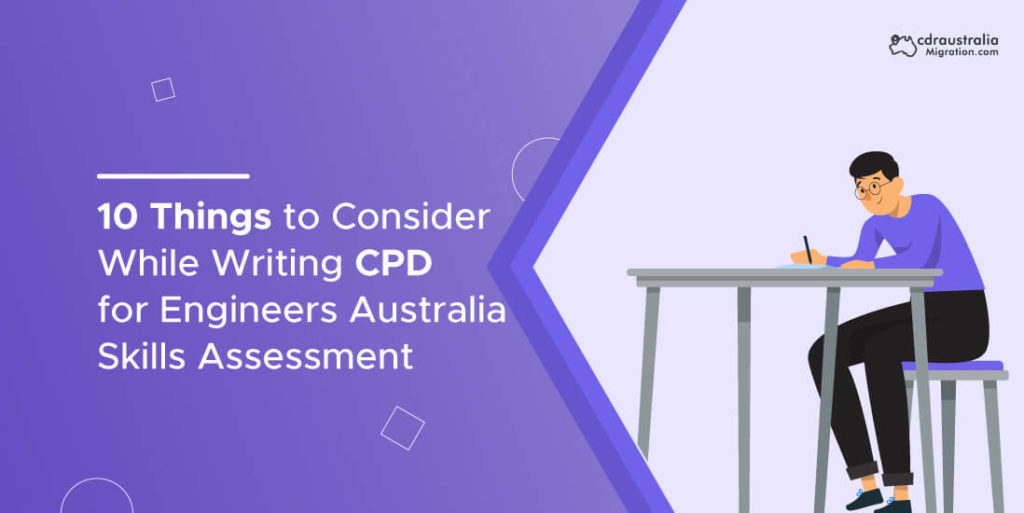Civil Engineers ANZSCO code 233211 is in high demand with very strong future growth prospects in Australia. Civil engineers work all around Australia, even in remote, with the majority of them employed in the petroleum and mining industries. They are mostly full-time workers and average working hours per week is 46 hours. According to a Glassdoor survey, the average annual salary for a civil engineer in Australia is $80,000. Entry-level jobs pay less, but as you gain experience, your wage will increase.
The following are the types of visas that Civil Engineers ANZSCO code 233211 apply in Australia:
- 189 Skilled Independent Visa
- 190 Skilled Nominated Visa
- 186 Employer Nomination Scheme Visa
- 494 Skilled Employer-Sponsored Regional (Provisional) Visa
- 407 Training Visa
- 485 Temporary Graduate
- 491 Skilled Regional (Provisional) Visa
- 482 Temporary Skill Shortage – Medium Term Stream
Subclass 190 Skilled Nominated visa and subclass 491 Skilled Regional (provisional) visa are the most practical options for Civil Engineers in the General Skilled Migration program. The typical method for processing is as follows:
- Seeking professional migration advice on your eligibility for an Australian visa and make an action plan for further.
- Getting a good English test result to support your visa application.
- Getting a positive outcome on your Skills Assessment for the profession you’ve chosen.
- Submit an Expression of Interest (EOI).
- Obtaining a State Nomination through a Registration of Interest (ROI) and a well-written state nomination application.
- You must submit your visa application within 60 days after the state nomination has been approved.
Alternatively, you can get Australian Permanent Residency by first applying for a subclass 186 Employer Nomination Scheme visa or a subclass 482 Temporary Skill Shortage visa through the employment visa route. The procedure will differ from that of the general skilled migration program.
Task of Civil Engineers ANZSCO code: 233211.
- Creating and analyzing drawings, plans, construction methods, and techniques, as well as determining methodologies of quality standards.
- Civil Engineers ANZSCO code 233211 organizing and directing site workers as well as the supply of construction materials, plant, and equipment, plan detailed programs for site coordination.
- Obtaining soil and rock samples at various depths throughout sites and testing them to evaluate strength, compressibility, and other characteristics that affect soil and rock behavior when a structure is built, as well as evaluating the safe loading for the soil.
- Analyzing architectural and technical drawings and requirements to estimate total costs, as well as creating detailed cost plans and estimates as budgetary management systems.
- Monitoring Changes to designs are being documented, cost consequences are being analyzed, and design variations are being measured and evaluated.
- Analyzing structural systems for static and dynamic loads.
- Structures are designed to avoid collapsing, bending, twisting, or vibrating in undesirable ways.
- Examining current and future travel flow patterns in light of population growth and changing needs.
- Designing physical features of transportation systems Highways, railroads, urban transit, air transportation, reverse supply systems, and their terminals .
Civil Engineer PR Points in Australia.
Civil Engineers ANZSCO code 233211 must achieve the Federal Government’s minimum points criterion for skilled migration (LIN 19/210: Pool and Pass Marks for General Skilled Migration Visas).
- Subclass 189 (Skilled—Independent) visa : 65 points.
- Subclass 190 (Skilled—Nominated) visa : 65 points.
- Subclass 491 (Skilled Work Regional (Provisional)) visa : 65 points
There are 6 different assessment pathways for Skills Assessment:
- A. Accredited Qualifications
- Australian Qualification Pathway
- Washington Accord Pathway
- Sydney Accord Pathway
- Dublin Accord Pathway
- Other Recognised Qualifications
- B. Non-Accredited Qualifications/Engineering Managers
- Competency Demonstration Report (CDR) Pathway
If your degree isn’t certified or comes from a country that isn’t on the Accord’s list don’t worry; you may be able to apply for a Skills Assessment through the Competency Demonstration Report (CDR) Pathway, though this require more work and time to prepare for your assessment application.
The supporting documents required to apply for a skills assessment vary based on your selected pathway, but below are some of the most required documents by Engineers Australia:
- Passport-Style Photograph.
- A primary identification document (e.g., a passport or a birth certificate) is required.
- Document for Name Change (if you have used another name or surname in the document).
- CV/Résumé.
- Engineers Australia recognizes General or Academic edition IELTS test results, TOEFL iBT & PTE Academic Test results as evidence of English Language Competency. If you are an Australian engineering graduate or have certified qualifications from signatory countries where English is the official language, you are normally exempt. Kindly see the MSA Booklet for further information.
- Academic transcripts and award certificates/completion letters for Australian and international.
- Evidence of Registration (if the registration or licensing is mandatory in the country you are currently practicing).
The EA will determine if your educational qualification and/or work experience are at a recognized level and closely related to Civil Engineer based on the supporting documentation you provided.
English requirement for Civil Engineer.
Another key task is to take an English test. The “Competent” level of English is the minimum criterion for general skilled migration. You must show proof that you passed one of the following tests in the three years prior to being invited to apply for the visa:
| Test | Score |
| (IELTS) The International English Language Testing System, Academic or General Training. | At least 6 for each of the 4 section |
| (TOEFL iBT) Test of English as a Foreign Language internet-based Test | Required 12 for listening, 13 reading, 21 writing and 18 for speaking respectively |
| Pearson Test of English Academic (PTE Academic) | 50 for each of the 4 components. |
| Occupational English Test (OET) | B for each of the 4 components. |
| Cambridge C1 Advanced test | Must have at least 169 in each of the 4 components |
You will not be required to take an English exam if you have a valid passport from one of the following countries. The UK, the US, Canada, New Zealand, and the Republic of Ireland are the countries involved.
If you want an Australian state to nominate you for a visa, you will need a higher level of English proficiency, depending on the Australian state you want to nominate you from.
If you get good scores, you’ll get more points when you submit your Expression of Interest (EOI). You will be given 10 points if you are skilled. You will receive 20 points if you are at a higher level.
For work visas, the English requirements can be found directly in the definitions of the 186 ENS visa, 482 TSS visa, and 494 SERS visa.
Why choose CDR Australia Migration?
CDRAustraliaMigration provides CDR reports for engineers, here is the information about Civil Engineers ANZSCO code 233211 wanting to migrate to Australia. You can get Career episodes, Summary Statements, CV writing and reviewing, CPD writing services from our professional experts.



